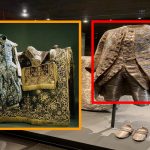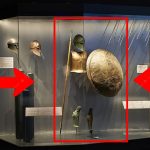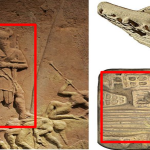A masterpiece of prehistoric craftsmanship is the Mold Gold Cape.

Discovered in 1833 at Bryn yr Ellyllon burial mound near Mold, Flintshire, Wales, the Mold Gold Cape stands as a testament to the ingenuity and skill of prehistoric metalworkers. Dating back 3600-3900 years, this remarkable artifact represents one of the finest examples of sheet-gold working from ancient times, unparalleled in its form and intricate design.
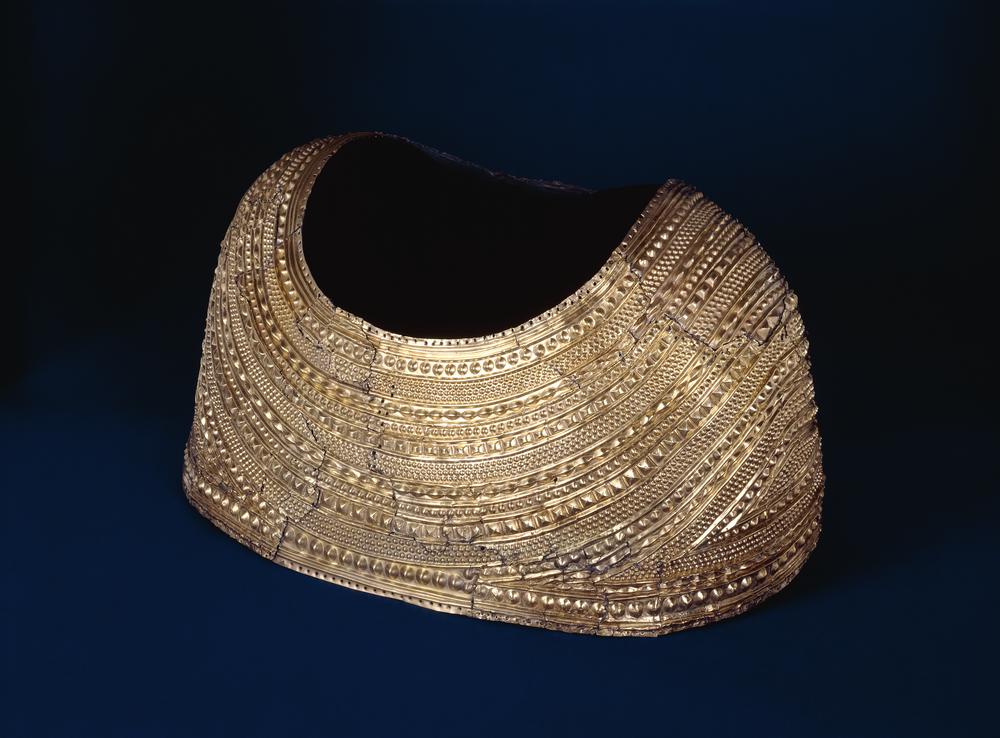
Crafted from a single ingot of gold, the Mold Gold Cape is a marvel of ancient metallurgy. Through laborious effort, artisans painstakingly beat the gold into an elaborate shape resembling a cape, which was then meticulously embellished with a stunning array of ribs and bosses. These decorations not only add to its aesthetic appeal but also serve a functional purpose, mimicking the appearance of multiple strings of beads draped amid folds of cloth.
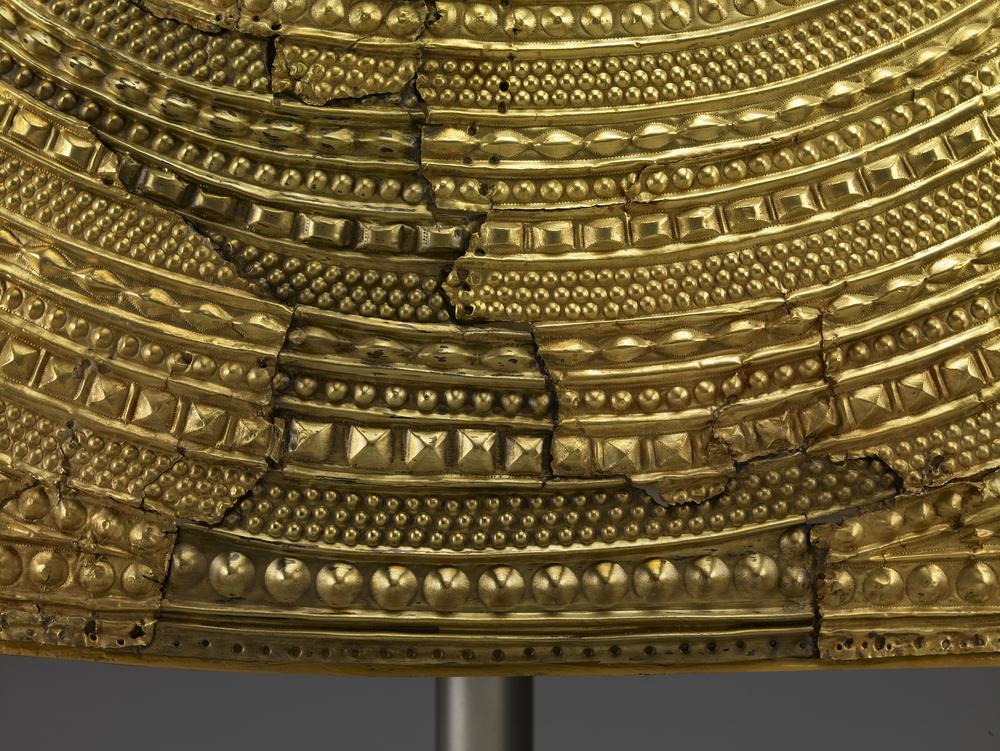
The craftsmanship of the cape is exquisite, reflecting a high level of technical skill and artistic vision. Each rib and boss is carefully placed to create a sense of movement and texture, enhancing the cape’s visual impact. Despite its age, the gold retains its luster, a testament to the durability of the material and the care with which it was fashioned.
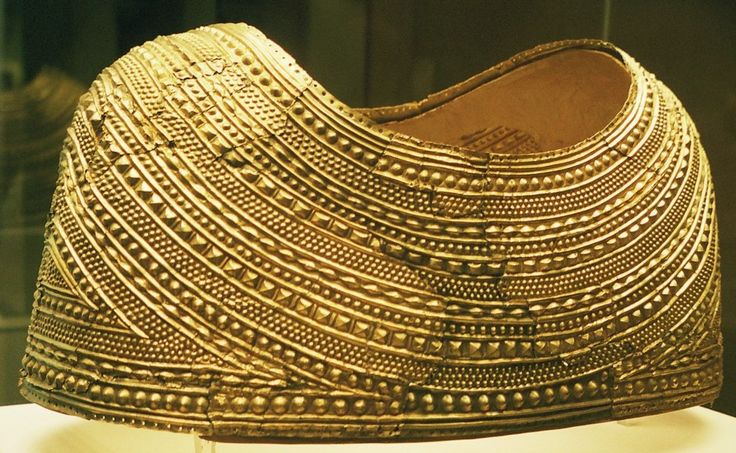
Weighing approximately 560 grams (1.23 pounds), the Mold Gold Cape is both substantial in weight and significance. Its discovery in a burial mound suggests it held profound ceremonial or ritualistic importance in prehistoric Welsh society, possibly symbolizing status, wealth, or spiritual beliefs.
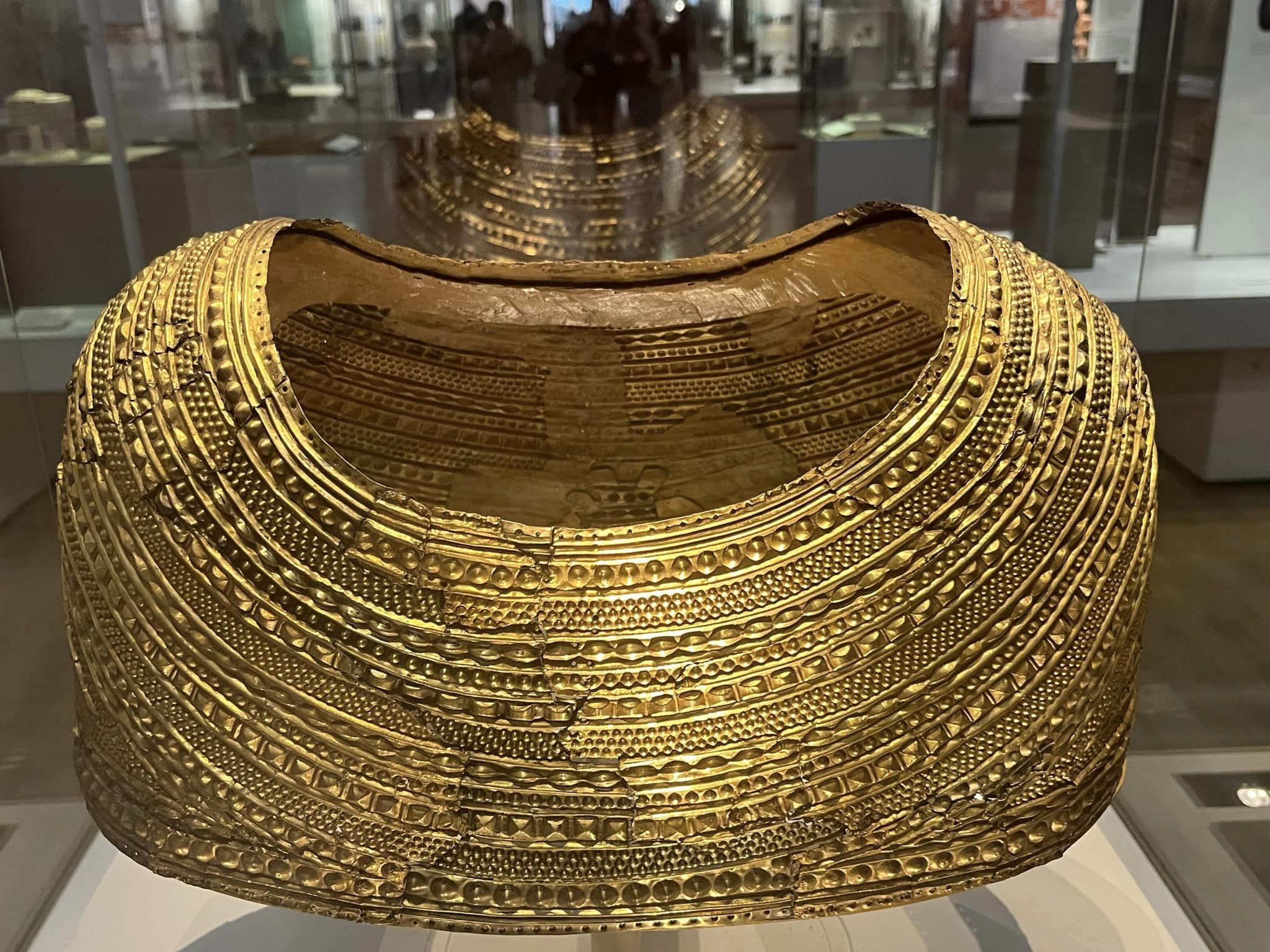
The cape’s design also offers valuable insights into the cultural and artistic practices of its time. It reflects a society that valued craftsmanship and adornment, where skilled artisans transformed precious materials into objects of both practical and symbolic value. The intricate detailing suggests a sophisticated understanding of geometric patterning and aesthetic composition, illustrating the artistic achievements of Britain’s ancient inhabitants.
Today, the Mold Gold Cape is housed in the British Museum, where it continues to captivate and inspire visitors with its beauty and historical significance. Its legacy endures as a masterpiece of prehistoric artistry, offering a glimpse into a distant past where craftsmanship and creativity flourished, leaving behind treasures that enrich our understanding of human history and culture.




